
Words and Photos: Matt Kartozian
I got my start in the gun industry doing Glock trigger jobs in the late ’90s. I had a version that broke under 2 pounds using modified stock parts – except the firing pins spring. I have done over 1000 trigger jobs since then. They are now all more or less obsolete thanks to Timney.
Glock opened their US offices in 1986. I am amazed it took 35 years for someone to do what Timney did to change the trigger. It’s one of those things that is so simple you smack yourself in the head and say “why didn’t I think of that?”
The Alpha trigger is available in two versions. One for Gen 3 and 4 Glocks (It should also work on Gen 1 and 2) and another version for the Gen 5 Glocks. Gens 1-4 all share the same trigger geometry and trigger parts. The Gen 5 uses a totally different trigger bar, firing pin, firing pin safety, trigger return spring, and trigger mechanism housing. As a result, Gen 5 guns cannot use previous gen trigger parts.

SEE ALSO: Improve Your Glock 22’s Accuracy: Ops Armory — Captain America
On a factory Glock trigger, the trigger bar pulls back the firing pin until released. The trigger bar is a stamped part and the surface that engages the firing pin lug is often rather rough. It’s a key area to smooth out and tune when doing a trigger job. Stamped steel sliding on a nice machined firing pin lug does not lead to a nice smooth break.
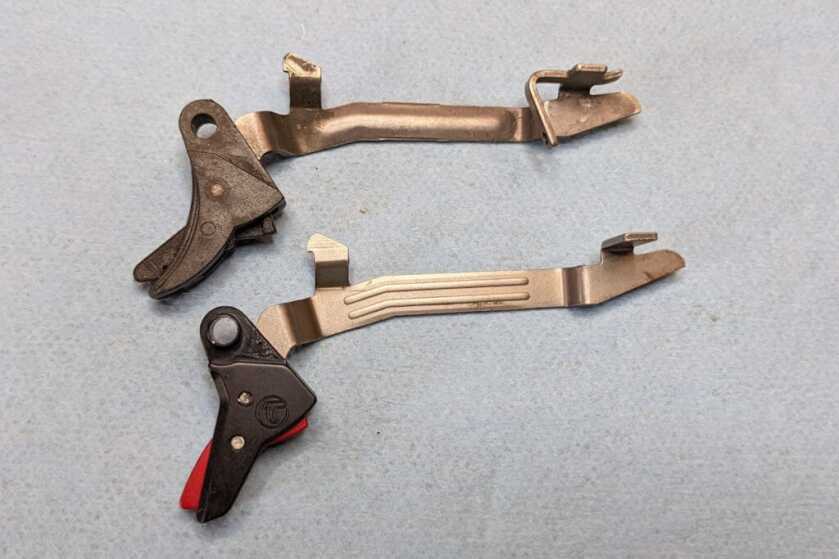
When pulling the trigger, you are also compressing the firing pin spring. One of the oldest ways to get your Glock trigger lighter was to use an aftermarket lighter firing pin spring. Many have said they are unreliable; they can be if not set up correctly. When done correctly they are fine. I have over 100,000 rounds through various competition Glocks using a lighter firing pin spring with no ignition issues.
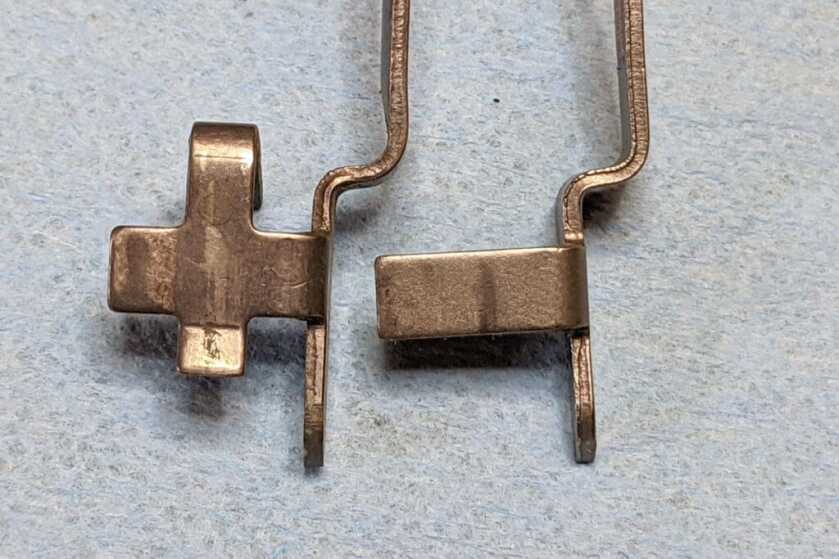
Timney got rid of all of that with the Alpha trigger. An aluminum sear housing replaces the trigger return spring in the trigger mechanism housing. The firing pin lug is now engaged by a sear and all the trigger bar does is lower the sear to let the firing pin fly. You now have nicely machined surfaces engaging each other and the firing pin spring weight has a much smaller influence on the trigger break weight.
With all stock factory parts, you can expect a break weight of 3-3.5 pounds when using the Alpha trigger. Not only is it light, but it’s also smoother and crisper with less stacking and creep. Even when using a plus connector I was still able to get a break weight under 4 pounds. If you want to go lighter that is easily achieved by swapping to a dot or minus connector to get under 3 pounds.
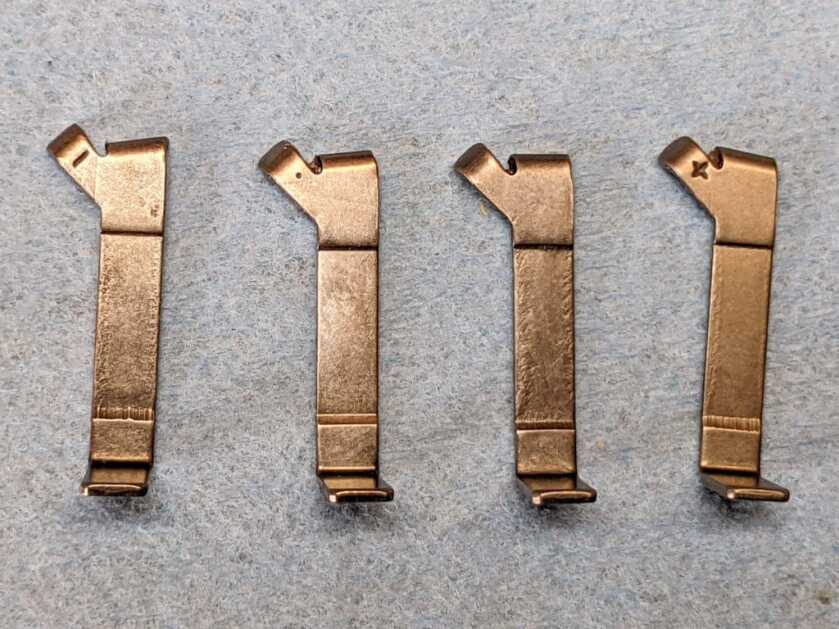
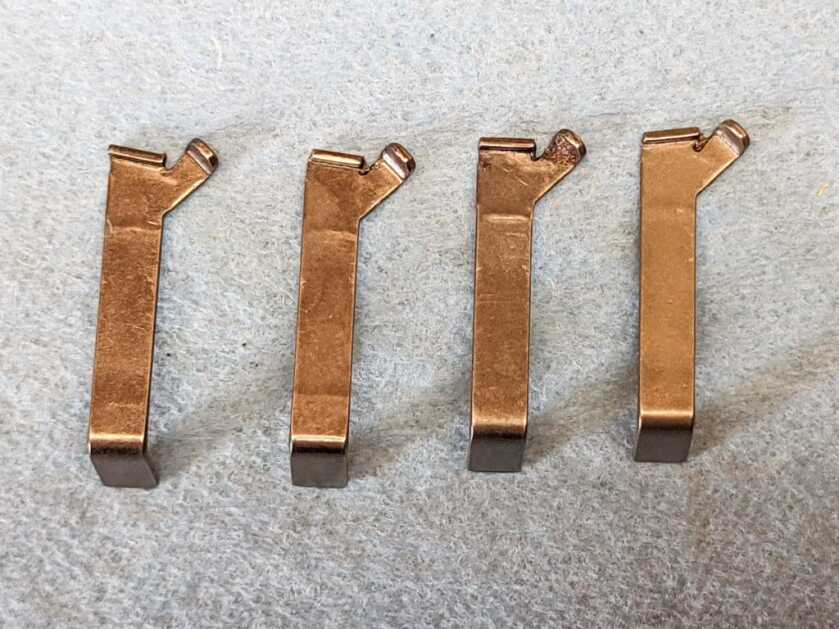
All of these weights are with the factory firing pin spring. That is a big selling point for the Alpha trigger. You no longer need to use a lighter firing pin spring to get under 3 pounds. The factory springs last longer and give reliable ignition across a wider range of ammo. For instance, if you have some sloppily made reloads where the primers were not seated all the way under flush they will probably still ignite with the factory firing pin spring. With a lighter firing pin spring you will get a clicker.
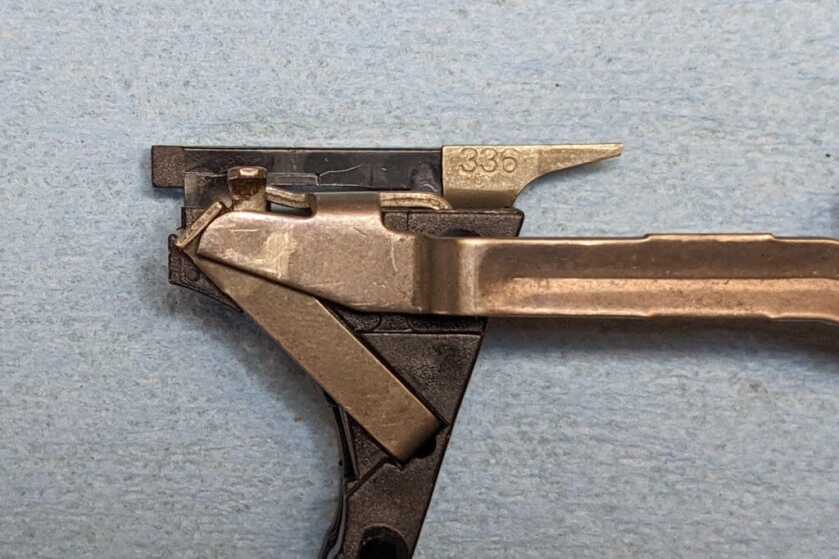
I have been shooting both versions of the trigger for the past few months and have about 4000 rounds through the Gen 3 and 1000 through the Gen 5. This is where I discovered the downside of this new trigger.
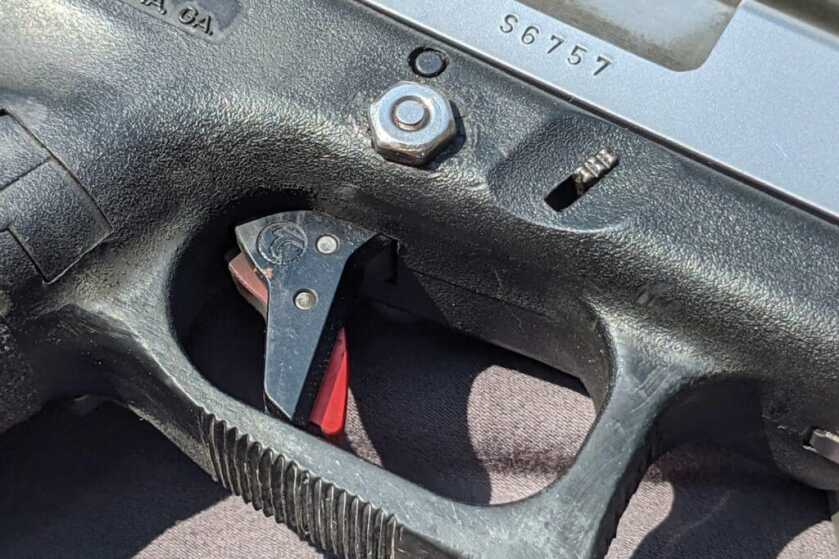
In May I was shooting my Gen 3 at a Steel Challenge match and on the last stage, the trigger would not let go of the firing pin. It felt like an overtravel stop that was incorrectly adjusted and wouldn’t let the trigger go all the way to the rear and release the firing pin. Instead of trying to fix it on the clock, I cleared the gun and left it as is so I could take it apart and try to find out what happened.
At the time of the failure, my trigger had fired about 2500 rounds without cleaning. After tearing it down it seems that a small piece of debris (dirt, carbon chunk, unburned powder etc) got into the sear housing and prevented the trigger bar from pushing it downwards.
The problem is easy to fix though. You need to clean it more often. My recommendation is to spray out both the factory trigger mechanism housing and the Timney sear housing with brake cleaner or similar every 500-1000 rounds. Since I started doing this I have had zero issues with the Alpha trigger. One of the reasons Glocks are popular is that you can be lazy and go thousands of rounds with no maintenance. With the Timney Alpha you cannot be lazy. It’s like a racecar vs. a daily driver. A modern production car can go 10,000 miles without maintenance. A racecar is a high-performance machine with super tight tolerances and precision parts. Because of that, a racecar often needs a full prep or maintenance teardown every 500-1000 miles. This trigger is no different. Treat it well and it will treat you well.
My Gen 3 Alpha trigger was an early production model and some users had failures to reset due to the trigger return spring being too weak. Timney quickly made a change and now two trigger return springs are included with the kit. If you have issues with reset failure, just change to the heavier red return spring. Glock shooters who are fans of the heavy reset pressure of the stock gun should go with the heavier red spring to start as it will feel more familiar to them.
Not only did Timney revolutionize the Glock trigger, but all three factory Glock safeties are also fully functional with the Alpha. The drop safety, firing pin stop, and trigger safety all work the same as the stock setup. The shoe of the trigger on the Alpha is machined aluminum and the trigger safety is much wider and more comfortable than the stock version.
The Alpha is also adjustable for pre-travel or take up. Be very careful when adjusting this as you can easily take out too much pre-travel and partially disengage all three safeties. I recommend leaving the pre-travel adjustment screw alone and shooting it as is from Timney.
I have tried many combinations of parts in conjunction with the Alpha. My preferred setup is factory minus connector, factory firing pin spring, lightened factory firing pin, lightened firing pin safety spring, and the red trigger return spring. I also tune and polish all metal surfaces that touch each other – the connector, firing pin, and firing pin safety. This gives me a break weight of 2.2 pounds in a Gen 3.
The trigger bar and sear of the Alpha are coated with NP3. Oversimplified, NP3 is an electroless nickel impregnated with Teflon. It makes metal stuff slippery and ridiculously resistant to corrosion (It won’t even rust in Florida). I have always been a big fan of NP3, so much so that most of the Ultimate 3 Gun Rifle was NP3ed. While it is slick, the Alpha trigger really likes a thick grease as well where the trigger bar meets the connector and the sear. I prefer Slide Glide from Brian Enos but any good grease will do.
This chart can guide you on what effect changing various trigger parts will do. All testing was done with a factory firing pin spring and the gray or light trigger return spring. The rest of the parts are all unmodified factory. All measurements were done with the Lyman digital trigger pull gauge. Each setup was measured five times then averaged to get the weights you see below.
| Connector | Gen 3 | Gen 5 |
| Standard | 3lb 3oz | 3lb 0oz |
| Plus | 3lb 14oz | 3lb 10oz |
| Dot | 2lb 9oz | 2lb 4oz |
| Minus | 2lb 6oz | 1lb 12oz |
| Light Firing Pin Spring | -3oz | -3oz |
| Red Trigger Spring | +1oz | +1oz |
| Full Race Trigger | 1lb 6oz |
The Full Race trigger is the Alpha with lightened factory firing pin, lightened firing pin safety spring, light firing pin spring, light trigger return spring and all parts tuned and polished.
Over the last 25 years, I have tried most of the modified and aftermarket Glock triggers out there. I have been using my own triggers all that time too. For years I sold my Top Fuel Trigger that broke at 2.25lbs. and cost $250. My competition Glocks will all have a Timney Alpha trigger moving forward. It is simply the best available and at $150, it’s a bargain.
Timney Alpha Trigger Specs:
Compatibility Gen 3-4 Kit: All 9/40/357sig stock Glocks
Gen 5 Kit: All 9mm Gen 5 stock Glocks (17, 19, 26, 34, 45)
Coating Coating Technologies NP3
Price $149.99 from Timney
Break weight 3 pounds +/- depending on other parts used.
User installable – no gunsmithing needed

Executive-level cleaning, treats our penthouse with proper care. This is luxury cleaning done right. Executive thanks.
I’ve known Matt for years and he knows what he’s talking about. He can also rock a Glock at a GSSF match too.
Thanks Ron! Hope things are going well.
Would you recommend this for a carry pistol? Is there any configuration where you would recommend it for every day carry?
I would not use it for carry, it is designed for competition use, among other reasons the break weight is lighter than I like for a carry gun. My carry glocks use tuned and polished stock parts.
Good review. Always been a fan of the Timney trigger.
I have these triggers on a gen3 19 and a 45. So far I’ve put around 300 rounds through the 45 and around 800 rounds through the 19. No sticking issues so far (these are later versions that came with 2 springs and also the c clip washers). I also swapped out previous trigger springs with 6.5lb springs on both (can’t recall the connectors). As I said, so far so good. I’ve had a couple unintentional double taps, but I’m sure with more trigger time, those will pass.
I have zev complete triggers on a gen4 41 and a gen3 34 that work very well and won’t be replaced, but these Timney triggers are excellent.
Looks like a FrankenGun with a nut a bolt through it’s neck, I’m sure it wouldn’t snag anything though.
It’s a USPSA Open Gun I built 20 years ago. Optic mount uses a bolt through to replace the trigger pin. As its a competition gun I am not worried about things snagging.
I am always amazed at the number of otherwise intelligent folks (including most law enforcement agencies) who still think a Glock is actually safe to carry on a daily basis. That is the biggest ruse since the devil convinced so many that he doesn’t exist. What it boils down to is this: if sufficient pressure is put on a Glock trigger of any kind, that gun will discharge.
This idiotic new invention is just what the world doesn’t need: the most dangerous firearm design ever foisted upon an easily duped public now has a lighter trigger pull. A Glock has no (as in zero) ACTIVE (user manipulated) safety features except that stupid little clitoris in the trigger. What is the number one cause of unintentional discharges? A finger on the trigger when it shouldn’t be there. And when that happens, that poor excuse for an only active safety feature is defeated. Also, I know one LEO who was reholstering a loaded Glock when the plastic adjuster on the string around the waist of his windbreaker got caught in his trigger guard without him realizing it. This happened because, like a good boy, his finger wasn’t in there, so there was room for the adjuster to sneak in. As he pushed the gun into the holster, it went off.
Glock apologists, please explain this: It takes three intentional movements to fire a cocked-and-locked Colt 1911: 1) defeat the grip safety; 2) defeat the thumb safety; and 3) apply sufficient pressure on the trigger. A Glock requires only one intentional OR unintentional act: 1) sufficient pressure on the trigger (which includes the practically nonexistent “trigger safety”, which is a misnomer).
The bottom line is this: Nobody should EVER carry a Glock with a round in the chamber. It just is n (user manipulated) ot safe.
NOW WHO WANTS TO ARGUE WITH THAT?
I have the Sig 320 with an external safety and I am happy. Many consider that a wimp feature. And some guys who have no idea have a “Glock limp” if they missed their artery. I have a Glock 19 and two S&W MP FS and Compact I prefer my Sig. I just know what it right for me.
My bad, I guess the term is “Glock leg” which is where some guys limp around as a result of an unintentional discharge of a firearm and “Glock limp” is more closely related to an improper grip of a firearm. Of course, you do NOT want either.
A 1911 aficionado has spoken and guns are not “safe” unless they are of 1911 style. The general points above are based in fact and are agreed upon by otherwise intelligent folks, but the straw man fallacy is not the best way to convey. Because remember that guy with the 1911 who forgot to take off the manual safety in the heat of the moment in defense of his life when there wasn’t a 1/2 second to make mistakes and… That points out training and practice. Like getting your garments out of the way or removing other unsafe conditions before re-holstering. So, other than re-holstering (and requiring less steps and time to fire), Glock is otherwise as safe or safer than 1911 styles?
“ unintentional discharges? A finger on the trigger when it shouldn’t be there.”
That would be a NEGLIGENT DISCHARGE.
OK Fudd. Go back to the nursing home
I gotten to where I want to use this reply. Used to be it was,you do you and i do me. In 10 years it’ll be gtfo of my face call someone who gaf.
Dude, I think your comment in longer than my story.
Fudd, I care not to argue anything. Your thinking is simplistic, your experience with anything other than a 1911 style pistol is likely zero, great you take one instance of some dude having an AD/ND, use inductive logic and voila, your a firearm expert. So, youre saying no one ever has AD/NDs with the coveted 1911? I guess the 100s of thousands of cops, armed citizens, and especially from which I hail the special operations community are all morons just lucky to not kill ourselves everyday for using Glocks in our personal lives or on duty. the only real difference between a double action or double action only say Beretta is a longer, harder trigger pull. Revolvers dont have safety’s, i guess those are the worst designs ever also. So, people havent or dont lighten up the triggers on DA revolvers for carry? the problem again arises with lack of training and common sense. Is this what you speak of but lay the problems at Glocks feet? So when this cop buddy had an ND, why was he wearing something that could interfere with reholstering? Thats damn common sense. Was he carrying IWB? How many morons reholster IWB while the holster is still in the waistband? Can you do it? Sure, generally dont recommend it, especially with a Glock. But that falls under training and/or common sense. Change my mind.